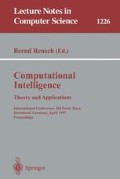Abstract
An important problem in robotics research is to develop methods for safe, robust, and efficient navigation. To be able to navigate purposefully in its environment, a robot has, first, to have some a priori knowledge about its environment, so that it can plan the paths necessary for accomplishing its tasks, and, second, to be able to react to any unforeseen obstacles that may arise it its way during the execution of its paths. Since real environments are usually complex and dynamic, the robot cannot have complete and correct a priori knowledge about them. To aggravate the situation, the robot's sensors usually deliver noisy readings, so even its runtime perceptions are not absolutely correct. Towards addressing the problem of purposeful yet reactive navigation without assuming either precise a priori knowledge or noise-free runtime sensory input, we have developed a navigation method integrating a qualitative path planner and a fuzzy controller. This method has been implemented and evaluated in the context of David, a Nomad 200 robot.
Preview
Unable to display preview. Download preview PDF.
References
Ali, K.; Goel, A.; Stroulia, E.: Some Experimental Results in Multistrategy Navigation Planning, Tech. Report GIT-CC-95-51 Georgia Inst. of Technology, 1995.
Goel, A.; Callantine, T.; Shankar, M.; Chandrasekaran, B.: Representation, Organization, and Use of Topographic Models of Physical Spaces for Route Planning. In Proceedings of the Seventh IEEE Conference on Artificial Intelligence Applications, Miami Beach, Florida, pp. 308–314, IEEE Computer Society Press, 1991.
Levitt, T.S.; Lawton, D.T.; Chelberg, D.M.; Nelson, P.C.: Qualitative Landmark-Based Path Planning and Following. In Proceedings AAAI-87, Seattle, July 1987, pp. 689–694.
Saffiotti, A.; Ruspini, E.H.; Konolige, K.: Using Fuzzy Logic for Mobile Robot Control. In: International Handbook of Fuzzy Sets and Possibility Theory. D.Dubois, H. Prade and H.J. Zimmermann Eds. Kluwer Academic, forthcoming 97.
Surmann, H.; Huser, J.; Peters, L.: Guiding and controlling mobile robots with a fuzzy controller. In: Proc. Fourth IEEE International Conference on Fuzzy Systems, Yokohama, Japan, 1995.
Schneider, D: Robuste Bewegungsstrategien Autonomer Mobiler Roboter, FAW Tech. Report, 1996.
Stroulia, E: Failure-Driven Learning as Model-Based Self-Redesign. PhD Thesis, Tech. Report GIT-CC-95-38 Georgia Inst. of Technology, 1994.
Author information
Authors and Affiliations
Editor information
Rights and permissions
Copyright information
© 1997 Springer-Verlag Berlin Heidelberg
About this paper
Cite this paper
Stroulia, E., Schneider, D., Prassler, E. (1997). Purposeful and reactive navigation based on qualitative path planning and fuzzy logic. In: Reusch, B. (eds) Computational Intelligence Theory and Applications. Fuzzy Days 1997. Lecture Notes in Computer Science, vol 1226. Springer, Berlin, Heidelberg. https://doi.org/10.1007/3-540-62868-1_137
Download citation
DOI: https://doi.org/10.1007/3-540-62868-1_137
Published:
Publisher Name: Springer, Berlin, Heidelberg
Print ISBN: 978-3-540-62868-2
Online ISBN: 978-3-540-69031-3
eBook Packages: Springer Book Archive

